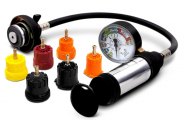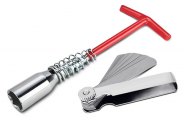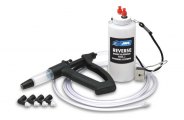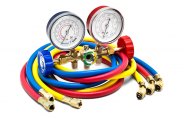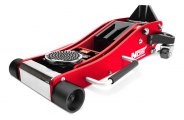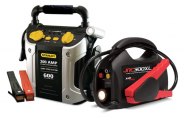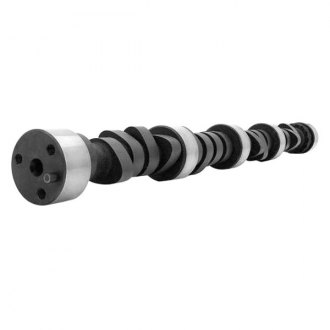Edsel Accessories & Parts

Edsel Parts
Edsel Wheels & Tires
Edsel Exterior Accessories
Edsel Automotive Lighting
Edsel Body Parts
Edsel Interior Accessories
Edsel Audio & Electronics
 Installation Parts
Installation Parts Stereos
Stereos Speakers
Speakers Amplifiers
Amplifiers Subwoofers
Subwoofers Cameras & Driver Safety
Cameras & Driver Safety Alarms & Remote Start
Alarms & Remote Start CB Radios & Components
CB Radios & Components Antennas & Components
Antennas & Components iPhone & Android Integration
iPhone & Android Integration Bluetooth
Bluetooth Equalizers & Processors
Equalizers & Processors Batteries & Power
Batteries & Power Video
Video Radar Detectors
Radar Detectors GPS Systems
GPS Systems Mounts & Chargers
Mounts & Chargers Action Cameras & Accessories
Action Cameras & Accessories
Edsel Automotive Tools
 Oil Change Tools
Oil Change Tools Engine Service Tools
Engine Service Tools Cooling System Service Tools
Cooling System Service Tools Spark Plug & Ignition Tools
Spark Plug & Ignition Tools Wheel & Tire Service Tools
Wheel & Tire Service Tools Brake Service Tools
Brake Service Tools Suspension & Steering Service Tools
Suspension & Steering Service Tools Fuel System Service
Fuel System Service Transmission & Drivetrain Service Tools
Transmission & Drivetrain Service Tools Pullers & Installers
Pullers & Installers A/C Tools & Equipment
A/C Tools & Equipment Electrical System Tools
Electrical System Tools Diagnostic & Testing Tools
Diagnostic & Testing Tools Exhaust System Service Tools
Exhaust System Service Tools Auto Glass Tools
Auto Glass Tools Lockout Kits
Lockout Kits Jacks
Jacks Automotive Lifts & Stands
Automotive Lifts & Stands Repair Manuals
Repair Manuals Automotive Paint
Automotive Paint EV Charging
EV Charging Battery Chargers & Jump Starters
Battery Chargers & Jump Starters Dollies & Movers
Dollies & Movers Creepers
Creepers Auto Detailing
Auto Detailing Key Cutting Machines
Key Cutting Machines Dent Repair Tools
Dent Repair Tools Service Carts
Service Carts Vehicle & Parts Protection
Vehicle & Parts Protection
By the start of the 21st century the number of brands marketed by General Motors Corporation no longer made financial sense. Increased competition from imports and other domestic manufacturers had diminished GM’s market share, and the company had far too many makes chasing scarce product development and marketing resources. Oldsmobile was the first to go in 2004, and during bankruptcy reorganization in 2009 GM further consolidated, shedding Pontiac, Saturn, Hummer and Saab. But at an earlier time in automotive history, beginning in the 1920s, having a number of brands that were offered at different price points made perfect sense. If a customer had a few dollars more to spend on a new car and wanted to move upmarket, having a product to offer him enabled GM to retain that customer instead of forcing him to shop elsewhere. Ford Motor Company’s effort to implement this marketing approach is what ultimately led to the Edsel.
GM’s brand hierarchy was established by chairman Alfred P. Sloan, and started with the economical Chevrolet. Then prices progressively rose with Oakland (which was later superseded by Pontiac), Oldsmobile, Buick, and finally Cadillac. Chrysler Corporation emulated GM with their Plymouth, Dodge, DeSoto, Chrysler, and Imperial brands. But at Ford, company founder Henry Ford preferred to focus on Ford cars and economical transportation. This served the company well in the early days of the automobile and during the lean times of the depression, but when buyers had more money to spend and wanted to upscale, Ford had little to offer them. Henry’s son Edsel had convinced him to buy the Lincoln brand of premium priced luxury cars in 1922, and launch the mid-priced Mercury in 1939, but that still left large price gaps in the Ford lineup. And hampering Mercury sales was the perception, accurate in many respects, that it was just a restyled Ford, at a time when the mid-priced Pontiacs, Oldsmobiles and Buicks were distinctive car lines with their own engines, transmissions and other mechanicals.
In the late 1940s, the Ford Motor Company, now with Henry Ford II at the helm, began the planning for a new division. The Korean War put these plans on hold but they resumed in late 1954 when research and development was begun on the “E-Car” (at the time E stood for experimental, as the name for the new car had not yet been decided). Market research conducted by Ford determined that only 26% of Ford car owners chose a Mercury when they wanted to move up to a mid-priced car, in contrast to GM, where 87% of Chevrolet owners stayed with GM and purchased a Pontiac, Oldsmobile or Buick. Statistics also showed that 82% of GM owners chose another GM car for their next vehicle purchase, while the retention rate for Ford was only 69%. Research was also done to identify the target E-Car buyer and his preferences. The goals for the E-Car were to increase Ford’s coverage of the mid-priced segment, increase buyer retention and corporate loyalty, and of course to increase Ford’s overall sales volume and profits.
Ford invested $250 million on the E-Car project. Stylists were directed to make the car distinctive so it would be immediately recognizable and different from a Ford or Mercury. The car’s features and specifications were intended to be superior to other cars in the mid-priced class. A new dealer network was established just to sell the E-Car, and Ford claimed that advanced production techniques would be employed in its construction. Although the name Edsel had been initially rejected, after many months of research and suggestions, and the hiring of an advertising agency just to develop a name proved fruitless, the car was called Edsel to honor the former company president. Months of extensive pre-launch publicity preceded the Edsel’s unveiling on September 4th, 1957.
The 1958 Edsels were offered in two sizes. The larger Citation, available in 2-door hardtop, 4-door hardtop, and convertible, and 2-door and 4-door hardtop Corsair, were both built on a 124 in. wheelbase Mercury chassis. The smaller Pacer, available in 2-door and 4-door hardtop, 4-door sedan, and 2-door convertible, and Ranger, available in 2-door and 4-door hardtops and sedans, were built on a 118 in. wheelbase Ford chassis. The Villager, Bermuda, and Roundup wagons were built on a 116 in. wheelbase Ford station wagon chassis. The standard engine in Citations and Corsairs was a 410 cu. in. 345 hp OHV V8, while the Ranger, Pacer and wagons were powered by a 361 cu.in. 303 hp OHV V8. The higher priced Citation and Corsair were only available with a 3-speed automatic transmission. Standard on the Ranger, Pacer and wagons was a 3-speed manual, with optional 3-speed manual with overdrive or 3-speed automatic. Innovative features included a rolling dome speedometer, self-adjusting brakes, and the infamous Teletouch push-button transmission selector at the center of the steering wheel. Although availability varied according to model, the option list was extensive and included air conditioning, power windows, power steering, two tone paint, and rear door child safety locks.
As has been historically well-documented, the Edsel had a less than auspicious debut. The styling was ridiculed, especially the vertical grille, which was referred to as a toilet seat or horse collar. Someone suggested that the Edsel looked like an “Oldsmobile sucking a lemon”. But the car also had quality control problems to the extent that some cars arrived at dealers not completely assembled. The Teletouch system, one of the features intended to set the car apart, proved problematic and it was dropped after the 1958 model year. Compounding these issues was the fact that the Edsel’s introduction coincided with the U.S. economy entering a recession, and sales of all cars in the mid-priced field were down. Although 63,110 1958 Edsels were sold in the U.S. and another 4,935 in Canada, not a bad new brand launch by historical standards, it was only about a third of what Ford had projected.
The first casualty of poor sales was the separate Edsel division - in 1958 Edsel was combined with Lincoln-Mercury. Although the vertical element of the grille remained, it was much more integrated into the front-end style on the 1959 Edsels, which had been pared down to just two models. The Ranger was still the base model, available in 2-door and 4-door hardtops and sedans, but now the Corsair, available in 2-door hardtop, 4-door hardtop and sedan, and 2-door convertible, replaced the Pacer, and both were built on the same chassis as the Ford Fairlane. The Villager, available in 6-passenger and 9-passenger capacities, was the lone wagon offering. The Ranger’s standard engine was a 292 cu. in. 200 hp OHV V8, while the Corsair and Villager were powered by a 332 cu. in. 225 hp OHV V8. For economy minded buyers a 223 cu. in. 145 hp in-line OHV 6-cylinder engine was available for the Ranger and Villager, and all buyers could choose the 361 cu. in. 303 hp OHV V8. A 3-speed manual transmission was standard with the 6-cylinder and Ranger V8. A 2-speed automatic transmission could be ordered for all engines and a 3-speed automatic was available with the 332 cu. in. V8.
In an effort to cut costs there were more shared components between ’59 Edsels and Fords, but this only reduced the car’s distinctiveness and reason for being. U.S. Edsel sales fell to less than 45,000 cars. Although styling had been completed for the 1960 model, Ford management decided that Edsel sales did not justify the investment in tooling. 1960 Edsels were little more than Ford Fairlanes with different grilles, tail lights and chrome trim. 1960 Edsel production ended on November 19th, 1959 after only 2846 cars were produced.
Besides controversial styling, an awkward name and the recession, there were other reasons for the Edsel’s failure. Although Ford had claimed that the Edsel would be new and completely different, it was actually based on existing Ford and Mercury platforms and assembled alongside Ford and Mercury cars. The task of having to build a somewhat different car on the same assembly line led to many of the quality control problems. The very research that indicated a need for a mid-priced model was outdated by the time the Edsel debuted. By then consumers, no doubt spurred by the economy, wanted compact, fuel-efficient cars, and the mid-priced segment was shrinking. Many cars in that price range, like Packard and Hudson were disappearing, or like DeSoto were soon to be discontinued. In fact, the car that would eventually become the Mercury Comet was originally intended to be a compact Edsel, at first supplementing the larger cars and then completely replacing them, but Edsel was shut down before the Comet was ready. The Comet was based on the Ford Falcon and although it wasn’t released until March, over 116,000 were sold during 1960 alone, just about matching the 3-year sales totals of the Edsel. The estimated total amount of money that Ford lost on the Edsel ranges from $250 million to $350 million, approximately 2-2.8 billion in today’s dollars.
When Ford announced the end of Edsel, the value of used Edsels plunged immediately. For many years the cars were little more than punchlines in jokes and the word Edsel became synonymous with failure. But like the proverbial phoenix rising, what was once a laughing stock has now become a popular collector car. Only about 118,000 Edsels were built before Ford pulled the plug, and this limited production is part of what makes Edsels valuable today. And although it may not have benefited the car at the time, the fact that Edsels share so many parts with other Fords and Mercurys makes them relatively easy to maintain and service. If you’ve got an Edsel or are contemplating an Edsel purchase, our digital shelves are stocked with the maintenance supplies, service and repair parts, and appearance products you need to keep your classic in top shape.
Dress your vehicle up. Keep it running at its peak or unleash its hidden power. Make it look like it just rolled off the show room floor. Take care of it and maintain it. You name it, we've got it. We have gathered everything you need to make your Edsel perfect both inside and out. CARiD's job is to meet your every expectation and provide you with quality and durable accessories and parts designed with excellence in mind. Whether you're after luxurious style, brisk performance, or anything in between, our wide assortment covers all the bases.

